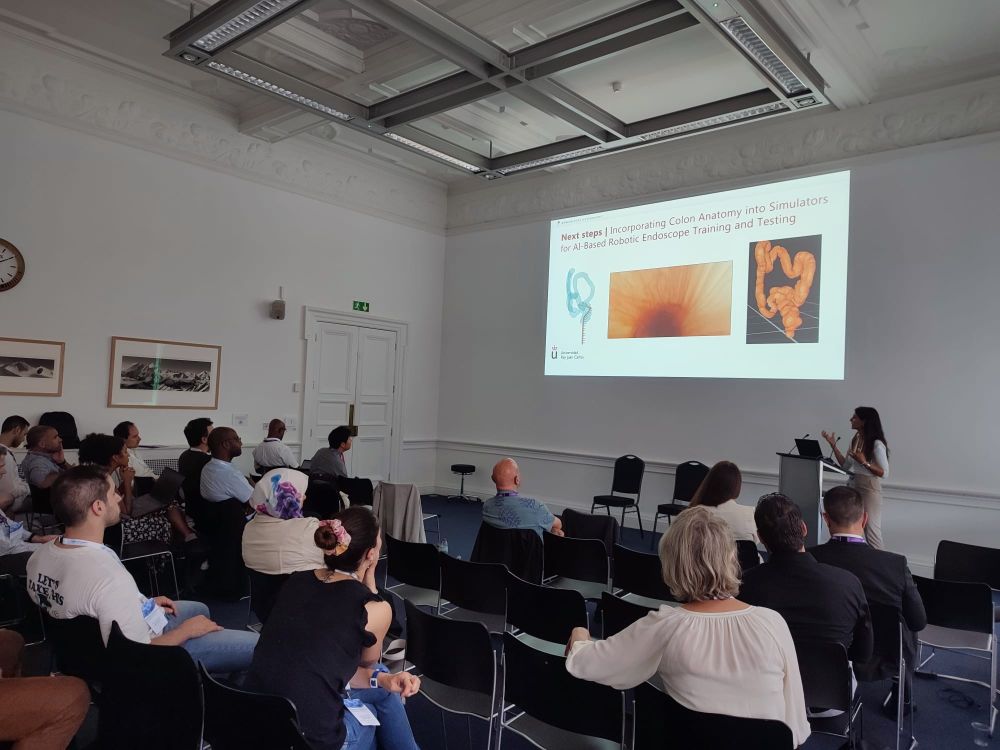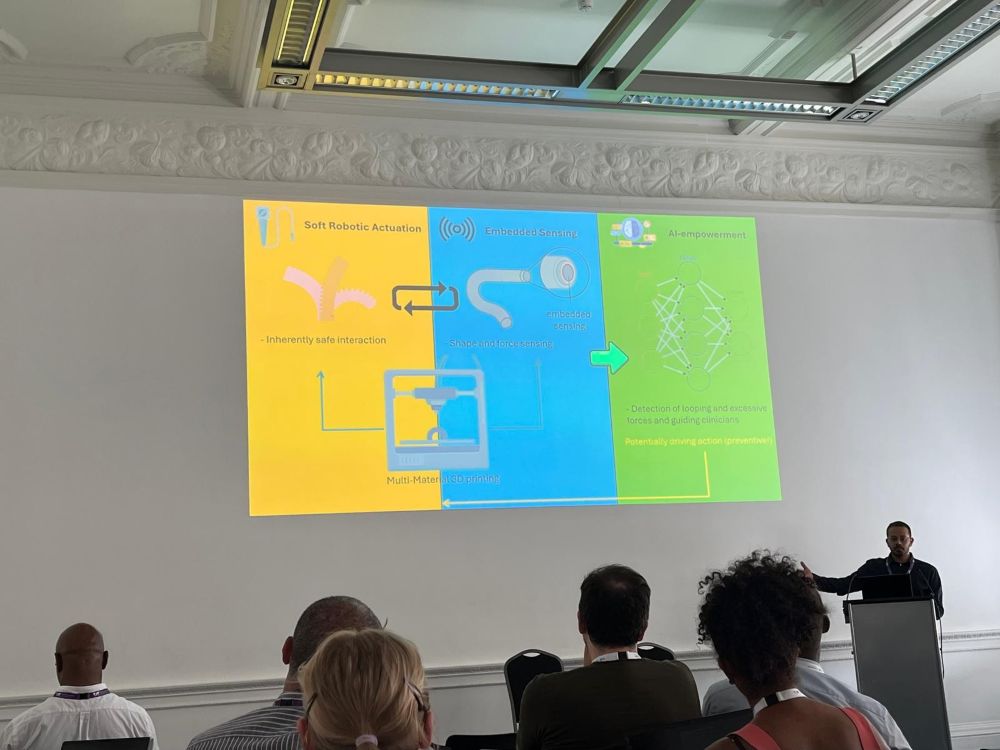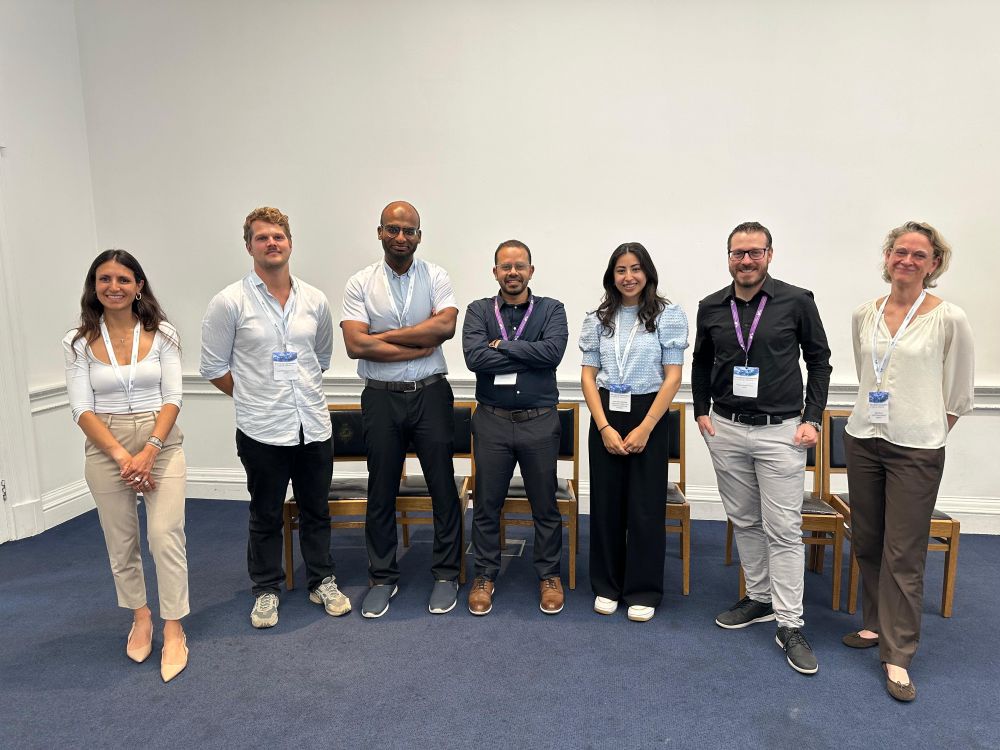At the “Hamlyn Symposium on Medical Robotics 2025” researchers on the IRE project engaged with clinicians, roboticist, and Industry experts to investigate the needs for robotic colonoscopy and how to get research and innovation of medical robotics out of the lab and into the clinics – and the answers are interesting in the development phase.
Bridging the gap from labs to clinical practices
Martina Finocchiaro and Mostafa Atalla co-organized the workshop “From Research to Clinical Practice - Bridging the gap in Robotic Colonoscopy” and discovered unmet clinical needs in colonoscopy and the role of robotics in meeting them. The challenges within colonoscopy are how to reduce looping and pain, improving visualization, and reducing the polyp missing rate.
Focus on evidence and data
To address the needs within colonoscopy the researchers focus on the importance of developing robotic tools from clinical evidence and data. In his workshop talk, Kristoffer Mazanti Cold from Roskilde University Hospital and CAMES, one of the partners in IRE, emphasized how AI and automation in robotic colonoscopy can be a game changer for both patients and clinicians, but he also expressed the importance of generating robust clinical evidence and innovating within existing clinical workflows. Martina Finocchiaro from DIKU also focused on the importance of evidence in her workshop talk and pointed out the significant anatomical differences between real patient colons and current physical simulators, highlighting the critical need for more representative physical and simulation models grounded in real-world patient data.

Next generation endoscopes
As a part of Intelligent Robotic Endoscopy Mostafa Atalla and the team from UTWENTE are developing the next generation of endoscopes. In his workshop talk he introduced the key concepts and highlighted the novel approach to designing 3D-printable structures with integrated sensing and actuation in a single fabrication step.
“This innovation has the potential to enable the production of low-cost endoscopes with built-in environmental awareness—paving the way for safer, more effective procedures,” Atalla says.
But is it enough to develop endoscopes and AI Robots based on clinical evidence and real-world patient data to reach clinical practices?

The bumpy road to clinical practices
One of the main obstacles on the road from research and Innovation to clinical practices is entering the market. This was a topic at the conference and in panel discussions. One of the issues is that it is difficult to enter the market for spin outs and smaller Innovative companies in competition with industry giants.
Enrique Morales from AMBU addressed how to break into the market for medical products in his workshop talk and the advice is to find your niche market and stick to existing workflows unless your innovation is ten times better than existing solutions, in this case you can go for the disruptive solution.
According to Momen Abayazid from UTWENTE the design plays an important role. In his invited talk at the workshop, “Endoluminal Robots: A Journey Through Unmet Medical Needs, Design Challenges, Regulatory Bodies, and Commercial Opportunities.”, he explored innovative approaches for developing variable-stiffness endoscopes and origami-inspired structures—technologies that hold great promise for IRE endoscopes.
What’s next?
To meet the needs of the market and the clinical practices we also must be aligned with the perception of the patient. As part of the IRE Project Birgitte Bruun from CAMES is therefore doing an anthropological study starting in October. At the symposium she did a poster presentation asking the developers to imagine being the patient having a Colonoscopy. The aim was twofold: to activate developers’ imaginations about patient experiences to include patients into the conference by proxy, and to tap into developers’ ideas about what might be important to address in research with patients.
Participants from IRE at the “Hamlyn Symposium on Medical Robotics 2025”
University of Twente: Momen Abayazid, Giulio Dagnino and Mostafa Atalla. University of Copenhagen: Martina Finocchiaro. CAMES: Birgitte Bruun, Kristoffer Cold, and Juana Maria Abdelreda. AMBU: Enrique Morales-Orcajo.
